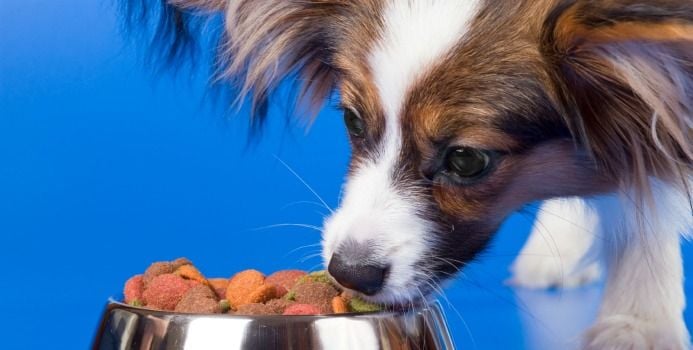In small amounts, like your child accidentally mistaking dog biscuits for cookies, you will probably have no problems. But before you start substituting the large variety of canned cat food for canned meat in your recipes, keep in mind that pet foods have not been subjected to all of the same scrutiny and safety regulations as human food receives from the Food and Drug Administration (FDA) and are processed differently.
The FDA is responsible for setting safety guidelines for food in the US. Many regulations are in place for food processors and manufacturers to provide quality, safe, and accurately labeled foods to consumers. These rules help to prevent contaminated products or improperly handled foods from causing sickness in the population. With many recent contaminated food issues in the news lately, there is much public concern over safety.
Through the FDA, under the Federal Food, Drug, and Cosmetic Act (FFDCA), your cat food and dog food is also required to be safe to eat, produced under sanitary conditions, contain no harmful substances, and be truthfully labeled. Pet food has some regulations when it comes to labeling and ingredients but it is not tested for safe human consumption. There have also been recalls on pet food for safety concerns. When comparing dried food vs. canned, consider that dried pet food is not sterile, whereas canned food may be a safer choice because it has been sterilized and canned.
You may think that because your pets often need the same basic components as you do, that their food could be interchanged with yours. It is true that people and pets all need the basics, carbohydrates, proteins, and fats- but the proportions and sources of these macronutrients are very different. Furthermore, the combinations that are found in pet foods could be harmful to humans over a long period of time. Some pets, like cats, require more proteins and less of other macronutrients, like carbohydrates, or different vitamins and minerals than humans do for a healthy diet.
Pet food often contains ingredients that are considered not appropriate or of high enough quality for human consumption. Some commonly used additives include kidneys, feet, lungs, undeveloped eggs, brain, livers, blood, ground bone, stomachs, intestines, necks, and spleens. Additionally, pet foods are often full of fillers like corn, wheat by-products, MSG, corn syrup and rice.
So although you may not get sick from eating a bowl of doggie kibble, it may be wise to focus on getting a variety of fresh healthy fruits, vegetables, whole grains and beans to meet your basic human needs!
Emily DeLacey MS, RD is a Registered Dietitian and currently working in Jamaica as a HIV/ AIDS Prevention Specialist. She attended Central Washington University for her Bachelor's Degree in Science and Dietetics and continued on after her internship to Kent State University for her Master's Degree in Science and Nutrition, with a focus on public health and advocacy. She served as a U.S. Peace Corps Volunteer in Malawi 2012-2014 working as a Community Health Advisor in a rural village, immersing in the joys of life without electricity or running water. She has been to 20+ countries and 47 of the 50 states in the US. Traveling, adventuring and experiencing new cultures has made her a passionate advocate for the equality of nutrition and wellness for all people.



